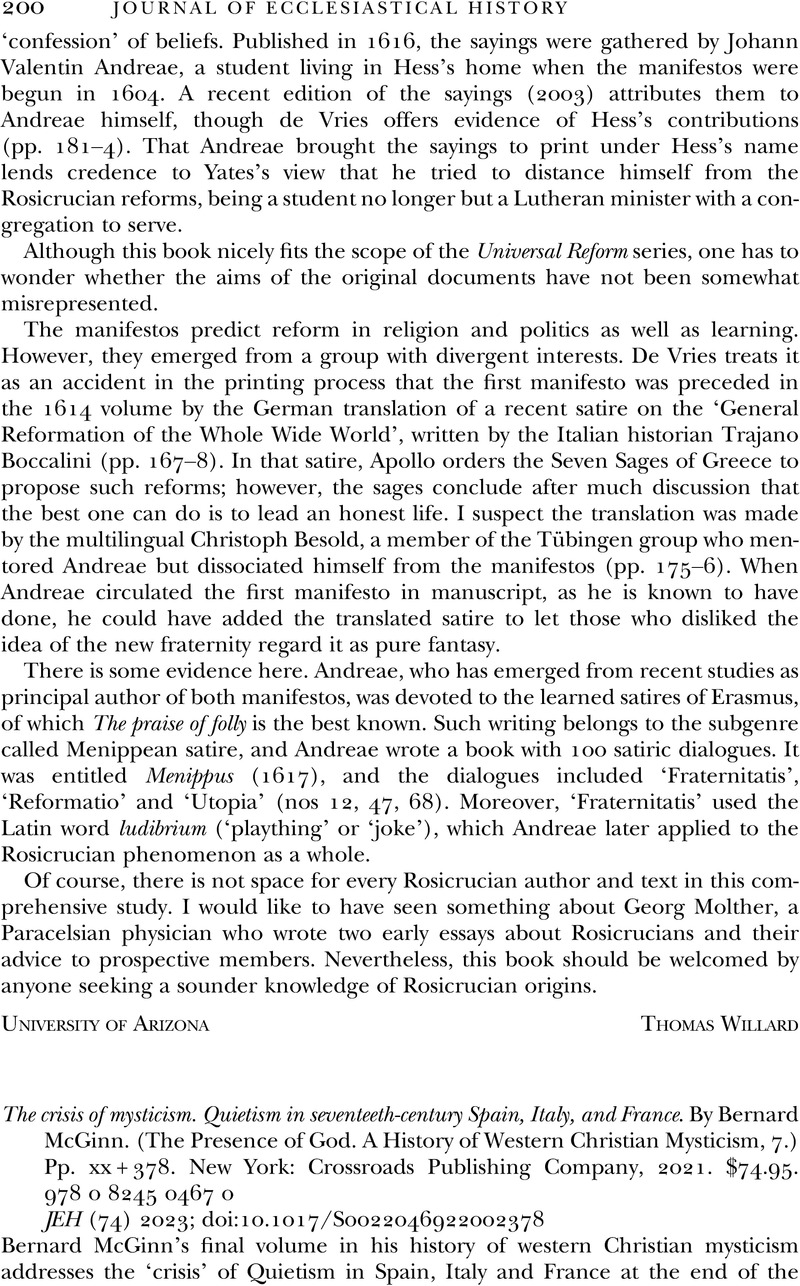No CrossRef data available.
Article contents
The crisis of mysticism. Quietism in seventeeth-century Spain, Italy, and France. By Bernard McGinn. (The Presence of God. A History of Western Christian Mysticism, 7.) Pp. xx + 378. New York: Crossroads Publishing Company, 2021. $74.95. 978 0 8245 0467 0
Review products
The crisis of mysticism. Quietism in seventeeth-century Spain, Italy, and France. By Bernard McGinn. (The Presence of God. A History of Western Christian Mysticism, 7.) Pp. xx + 378. New York: Crossroads Publishing Company, 2021. $74.95. 978 0 8245 0467 0
Published online by Cambridge University Press: 29 December 2022
Abstract
An abstract is not available for this content so a preview has been provided. Please use the Get access link above for information on how to access this content.

- Type
- Reviews
- Information
- Copyright
- Copyright © Cambridge University Press 2022



